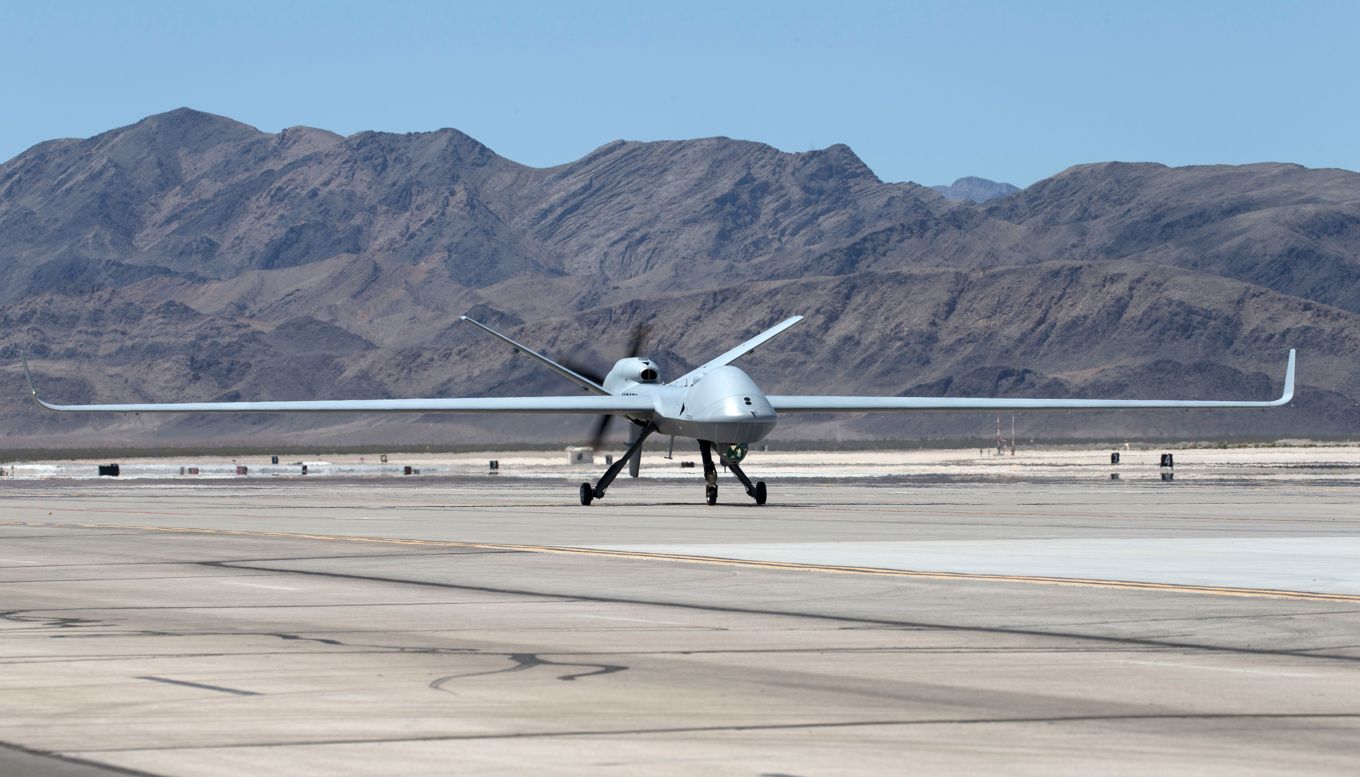Personnel from Royal Air Force 54 Squadron, are currently undertaking the first Instructor Operating Course on Protector simulators at the General Atomics – Aeronautical Systems Inc. (GA-ASI) Flight Test & Training Center in Grand Forks, North Dakota. The Operational Conversion Course (OCU) 1 crews, comprising a Pilot, Sensor Operator, and Mission Intelligence Coordinator (MIC), have been testing various simulated scenarios, under the tuition of GA-ASI Instructors. The GA Instructors were previously evaluated by personnel from the Royal Air Force’s Central Flying School-Examination Wing as part of the Military Aviation Authority governed Contractor Flying Approved Organisation Scheme.
Officer Commanding 54 Squadron, the Advanced Air Intelligence, Surveillance, Target Acquisition and Reconnaissance (ISTAR) Academy, is Wing Commander Evans. He said,”The Protector Instructor Orientation Course marks an important milestone in the Programme and in the training of the OCU 1 crews, the majority of whom will be the first batch of RAF instructors on Protector. Ensuring the course and the simulator scenarios that support training delivery are suitable for all experience levels is paramount if we are to achieve our future training output.This groundwork, conducted in partnership with General Atomics, will see Protector become a game changing capability for the RAF and future international partners, with realistic simulation at the very heart of training delivery and operational effectiveness.”

Simulated missions include Intelligence, Surveillance and Reconnaissance activity to find, fix and follow designated targets on the ground, with the pilot maintaining an optimum position in the air, while the Sensor Operator and MIC work together to maintain target tracking. The course familiarises future instructors with the RAF-specific training material and mission scenarios which will form the basis of RAF delivered training to all Protector crews. Future OCU training will evaluate the skills required to operate Protector and its equipment, including real-time exploitation of intelligence involving the Multi-Spectral Targeting System and Synthetic Aperture Radar.
Equipped with a suite of advanced equipment and precision strike weapons, Protector will provide critical armed surveillance capability and will be able to deploy against potential adversaries around the globe. The aircraft will also be able to fly in busy unsegregated airspace thanks to ‘detect and avoid’ technology with a potential endurance of over 40 hours. The Programme includes expansion of 54 Squadron capability, with new infrastructure at RAF Waddington including a training centre for UK and international students. The centre will put the RAFs ISTAR Force at the very forefront of Remotely Piloted Air Systems for the UK and partner nations. The UK is investing in 16 Protector RG Mk1 (MQ-9B) for the RAF; the first eight will enable an Initial Operating Capability scheduled for 2025 at RAF Waddington. Capable of operating anywhere in the world, the Lincolnshire base will be the home of the Force, the site of launch and recovery to support domestic training, and command and control for overseas operations.















